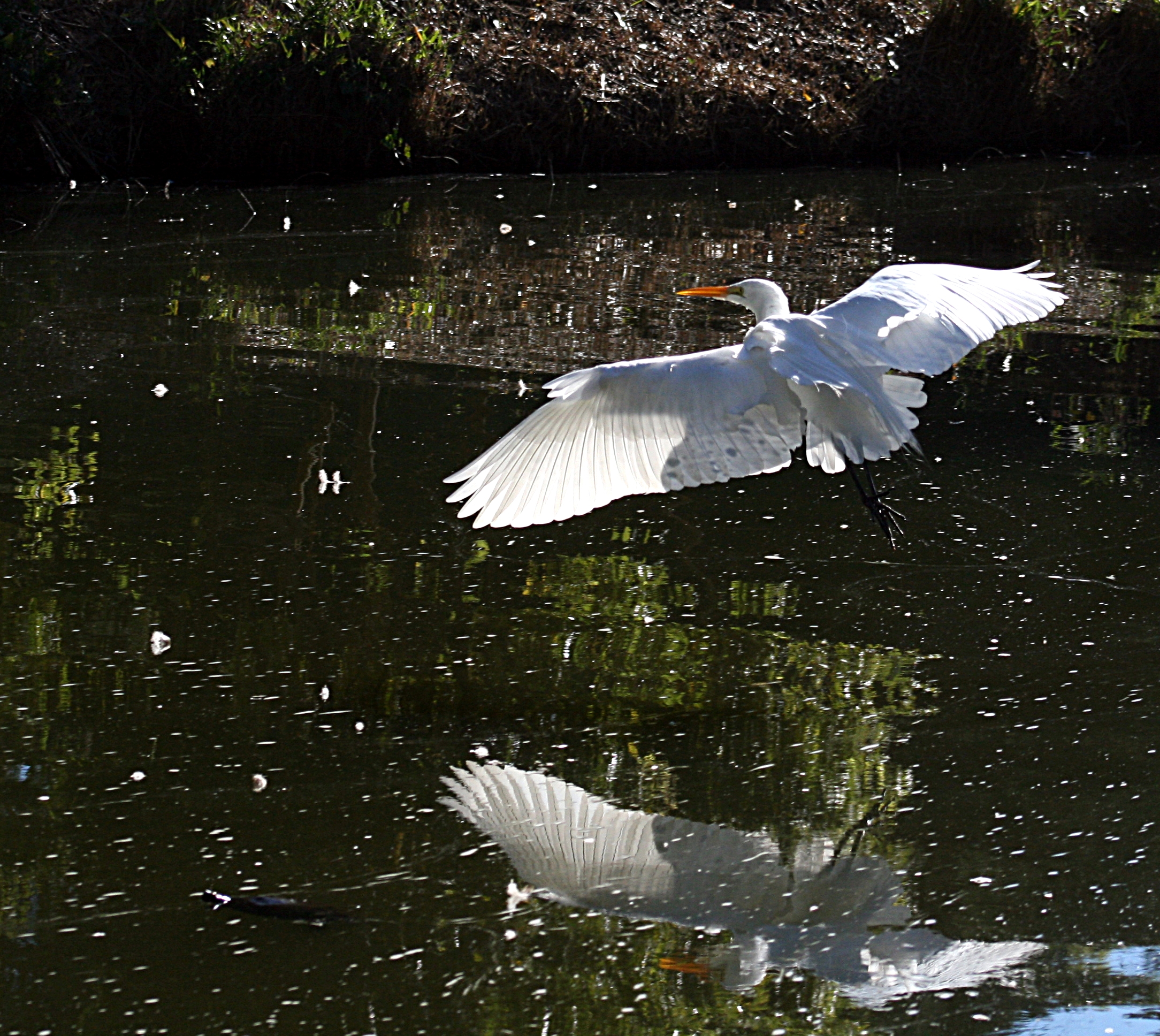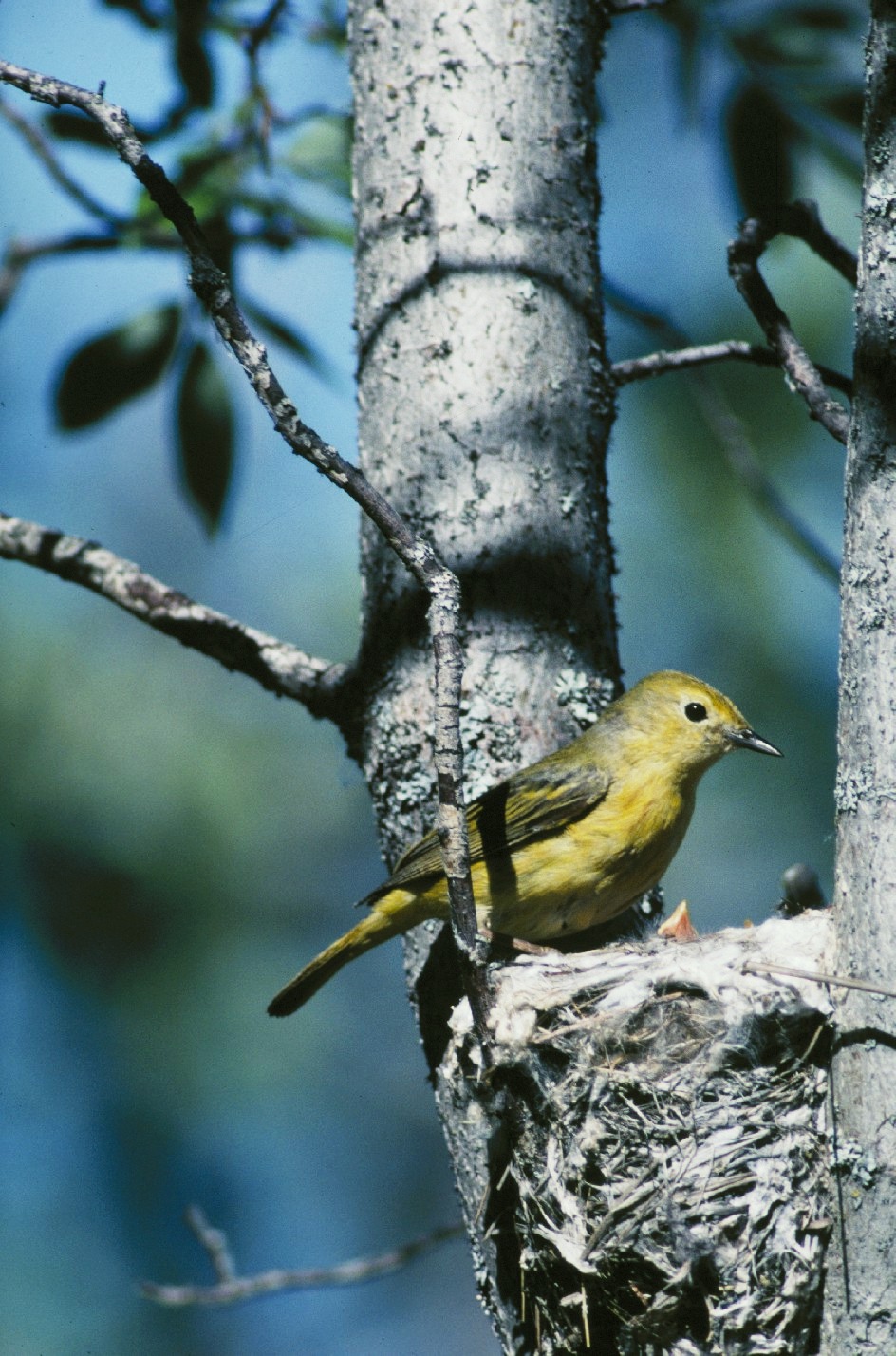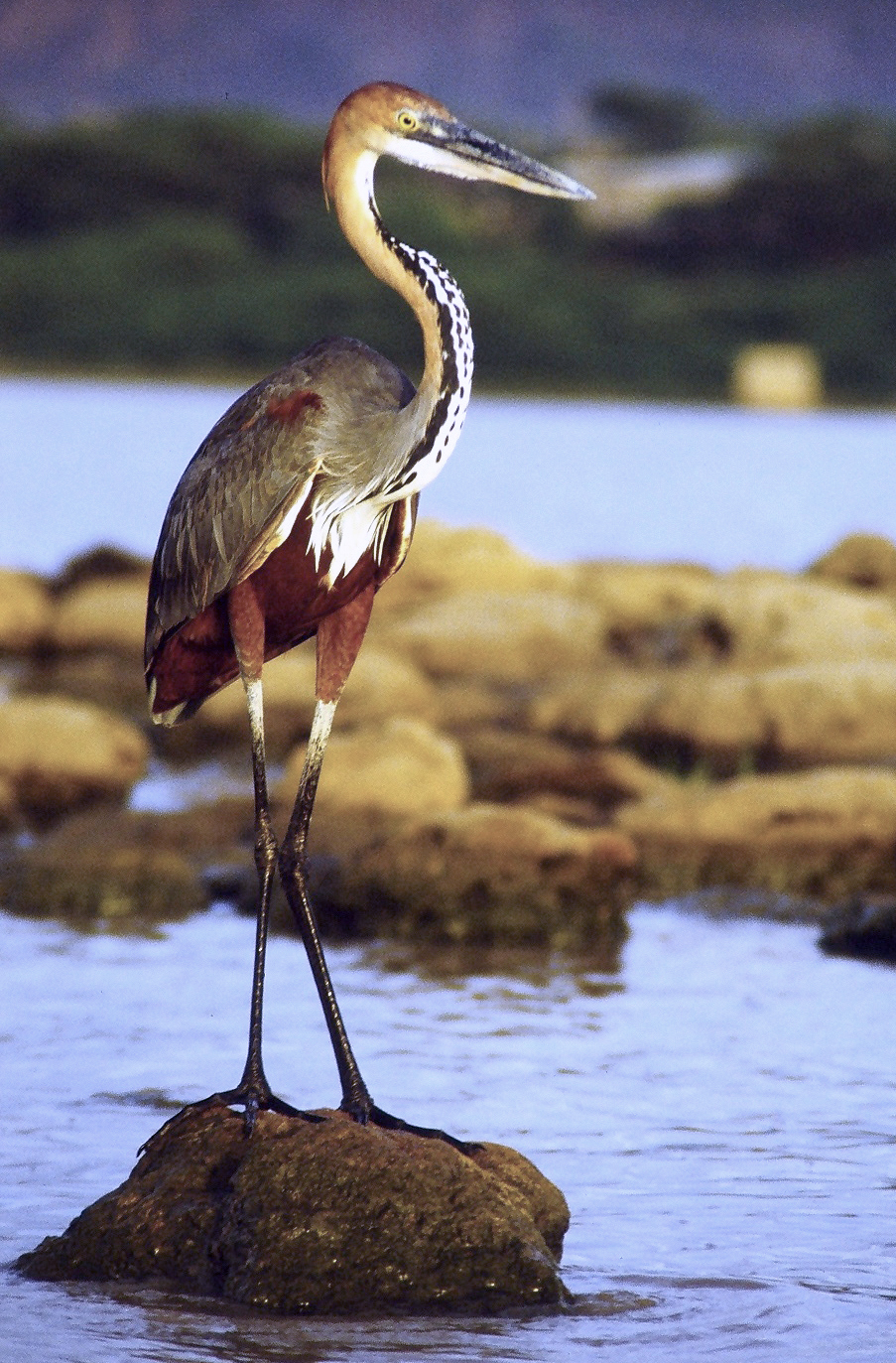|
Tárcoles River
The Tárcoles River, also called the Grande de Tárcoles River or the Río Grande de Tarcoles, in Costa Rica originates on the southern slopes of the Cordillera Central volcanic range and flows in a south-westerly direction to the Gulf of Nicoya. The river is long and its watershed covers an area of , which encompasses around 50% of the country's population. Course The river's watershed drains approximately 67% of Costa Rica's untreated organic and industrial waste and is considered the most contaminated river basin in the country. The river's upper reaches form the northern border of the Carara National Park. It is a habitat for American crocodiles, while the marshes located at the river's mouth have many waterfowl and wading birds. Among the many herons and egrets are the boatbill and bare-throated tiger heron, and other birds found here include double-striped thick-knee, mangrove warbler and American pygmy kingfisher. The total list known of birds well exceeds 320 sp ... [...More Info...] [...Related Items...] OR: [Wikipedia] [Google] [Baidu] |
Cordillera Central (Costa Rica)
The Cordillera Central is a volcanic mountain range in central Costa Rica which continues from the Continental Divide to east of Cordillera de Tilarán. It extends 80 km from Tapezco Pass to the Turrialba Volcano and ends on the Pacuare River. It is separated from Cordillera de Tilarán by Balsa River and Platanar and Zarcero hills. The Cordillera Central is part of the American Cordillera, a chain of mountain ranges (cordillera) that consists of an almost continuous sequence of mountain ranges that form the western "backbone" of North America, Central America, South America and Antarctica. It contains four large volcanoes Poás (2,708 m), Barva (2,906 m), Irazú and Turrialba (3,340 m). The highest peak is Irazú at 3,432 m. South of the range lie elevated plains of central tectonic depression of Costa Rican Central Valley. Cordillera Central's four main volcanoes are protected as national parks A national park is a nature park designated for conservation (e ... [...More Info...] [...Related Items...] OR: [Wikipedia] [Google] [Baidu] |
Egret
Egrets ( ) are herons, generally long-legged wading birds, that have white or buff plumage, developing fine plumes (usually milky white) during the breeding season. Egrets are not a biologically distinct group from herons and have the same build. Biology Egrets hold a separate group with bitterns and herons within the 74 species found in the bird family Ardeidae. Many egrets are members of the genus, genera ''Egretta'' or ''Ardea (genus), Ardea'', which also contain other species named as herons rather than egrets. The distinction between a heron and an egret is rather vague, and depends more on appearance than biology. The word "egret" comes from the French word ''aigrette'' that means both "silver heron" and "brush", referring to the long, filamentous feathers that seem to cascade down an egret's back during the breeding season (also called "egrets"). Several of the egrets have been reclassified from one genus to another in recent years; the great egret, for example, has be ... [...More Info...] [...Related Items...] OR: [Wikipedia] [Google] [Baidu] |
Common Basilisk
The common basilisk (''Basiliscus basiliscus'') is a species of lizard in the family Corytophanidae. The species is endemic to Central America and South America, where it is found near rivers and streams in rainforests. It is also known as the Jesus Christ lizard, Jesus lizard, South American Jesus lizard, or for its ability to run on the surface of water. Description The common basilisk can be distinguished from similar species within its range by its large size and the high fin-like crest along its back. Most common basilisks are brown and cream in color. Males also have high crests on the head and tail. Both genders are brown to olive, and have a white, cream, or yellow stripe on the upper lip and a second stripe along either side of the body; these stripes have higher contrast in juveniles and fade as the lizards age. Hatchlings weigh a mere and are long. Adults can grow to a total length (including tail) of 76 cm (2.5 feet). Females are generally , and weigh half ... [...More Info...] [...Related Items...] OR: [Wikipedia] [Google] [Baidu] |
Caiman
A caiman ( (also spelled cayman) from Taíno language, Taíno ''kaiman'') is an alligatorid belonging to the subfamily Caimaninae, one of two primary lineages within the Alligatoridae family (biology), family, the other being alligators. Caimans are native to Central America, Central and South America and inhabit marsh, marshes, swamps, lakes, and mangrove rivers. They have scaly skin and live a fairly nocturnal existence. They are relatively small-sized crocodilians with an average maximum weight of depending on species, with the exception of the black caiman (''Melanosuchus niger''), which can grow more than in length and weigh in excess of 450 kg (1,000 Ib). The black caiman is the largest caiman species in the world and is found in the slow-moving rivers and lakes that surround the Amazon basin. The smallest species is the Cuvier's dwarf caiman (''Paleosuchus palpebrosus''), which grows to long. There are six different species of caiman found throughout the wate ... [...More Info...] [...Related Items...] OR: [Wikipedia] [Google] [Baidu] |
American Pygmy Kingfisher
The American pygmy kingfisher (''Chloroceryle aenea'') is a species of "water kingfisher" in subfamily Cerylinae of family Alcedinidae. It is found in the American tropics from southern Mexico south through Central America into every mainland South American country except Chile and Uruguay. It also occurs on Trinidad.HBW and BirdLife International (2022) Handbook of the Birds of the World and BirdLife International digital checklist of the birds of the world. Version 7. Available at: http://datazone.birdlife.org/userfiles/file/Species/Taxonomy/HBW-BirdLife_Checklist_v7_Dec22.zip retrieved 13 December 2022Remsen, J. V., Jr., J. I. Areta, E. Bonaccorso, S. Claramunt, A. Jaramillo, D. F. Lane, J. F. Pacheco, M. B. Robbins, F. G. Stiles, and K. J. Zimmer. Version 24 July 2022. Species Lists of Birds for South American Countries and Territories. https://www.museum.lsu.edu/~Remsen/SACCCountryLists.htm retrieved 24 July 2022 Taxonomy and systematics The first Species description, forma ... [...More Info...] [...Related Items...] OR: [Wikipedia] [Google] [Baidu] |
Yellow Warbler
The yellow warbler (''Setophaga petechia'') is a New World warbler species. Yellow warblers are the most widespread species in the diverse genus ''Setophaga'', breeding in almost the whole of North America, the Caribbean, as well as northern South America. Etymology The genus name ''Setophaga'' is from Ancient Greek ''ses'', "moth", and ', "eating", and the specific ''petechia'' is from Italian ''petecchia'', a small red spot on the skin. Description and taxonomy Other than in male breeding plumage and body size, all warbler subspecies are very similar. Winter, female and immature birds all have similarly greenish-yellow uppersides and are a duller yellow below. Young males soon acquire breast and, where appropriate, head coloration. Females are somewhat duller, most notably on the head. In all, the remiges and rectrices are blackish olive with yellow edges, sometimes appearing as an indistinct wing-band on the former. The eyes and the short thin beak are dark, while the feet a ... [...More Info...] [...Related Items...] OR: [Wikipedia] [Google] [Baidu] |
Double-striped Thick-knee
The double-striped thick-knee (''Hesperoburhinus bistriatus'') is a stone-curlew, a group of waders in the family Burhinidae. The vernacular name refers to the prominent joints in the long greenish-grey legs, and ''bistriatus'' to the two stripes of the head pattern. Taxonomy The double-striped thick-knee was formally described in 1829 by the German naturalist Johann Georg Wagler from a specimen collected in Mexico. He coined the binomial name ''Charadrius bistriatus''. The specific epithet ''bistriatus'' combines the Latin ''bi-'' meaning "two-" or "double-" with ''striatus'' meaning "stripe". The double-striped thick-knee is now placed in the genus ''Burhinus'' that was erected by the German zoologist Johann Karl Wilhelm Illiger in 1811. In IOC 14.1, the double-striped thick-knee was transferred to the newly described genus ''Hesperoburhinus''. Four subspecies are recognised: * ''H. b. bistriatus'' (Wagler, 1829) – south Mexico to northwest Costa Rica * ''H. b. vocifer'' ( ... [...More Info...] [...Related Items...] OR: [Wikipedia] [Google] [Baidu] |
Bare-throated Tiger Heron
The bare-throated tiger heron (''Tigrisoma mexicanum'') is a wading bird of the heron family, Ardeidae, found from Mexico to northwestern Colombia, with one recorded sighting from the United States in Hidalgo County, Texas. It is in length and weighs . This large species is found in more open habitats than other '' Tigrisoma'' herons, such as river and lake banks. It waits often motionless for suitable prey such as fish, frogs or crabs to come within reach of its long bill. This is a solitary breeder, not normally found in heron colonies. The nest is a small flattish stick platform in a tree into which 2–3 green-tinged white eggs are laid. Description The throat is bare and is[...More Info...] [...Related Items...] OR: [Wikipedia] [Google] [Baidu] |
Boat-billed Heron
The boat-billed heron (''Cochlearius cochlearius''), colloquially known as the boatbill, is an atypical member of the heron family. It is the only member of the genus ''Cochlearius'' and was formerly placed in a monotypic family, the Cochleariidae. It lives in mangrove swamps from Mexico south to Peru and Brazil. It is a nocturnal bird, and breeds semiBird colony, colonially in mangrove trees, laying two to four bluish-white eggs in a twig nest. Taxonomy In 1760 the French zoologist Mathurin Jacques Brisson included a description of the boat-billed heron in his ''Ornithologie'' based on a specimen collected in French Guiana. He used the French name ''La Cuillière'' and the Latin ''Cochlearius''. The two stars (**) at the start of the section indicates that Brisson based his description on the examination of a specimen. Brisson placed the species in a new genus ''Cochlearius'' (with the same name as that of the species). When in 1766 the Swedish naturalist Carl Linnaeus updated ... [...More Info...] [...Related Items...] OR: [Wikipedia] [Google] [Baidu] |
Heron
Herons are long-legged, long-necked, freshwater and coastal birds in the family Ardeidae, with 75 recognised species, some of which are referred to as egrets or bitterns rather than herons. Members of the genus ''Botaurus'' are referred to as bitterns, and, together with the zigzag heron, or zigzag bittern, in the monotypic genus ''Zebrilus'', form a monophyletic group within the Ardeidae. Egrets do not form a biologically distinct group from herons, and tend to be named differently because they are mainly white or have decorative plumes in breeding plumage. Herons, by evolutionary adaptation, have long beaks. The classification of the individual heron/egret species is fraught with difficulty, and no clear consensus exists about the correct placement of many species into either of the two major genera, ''Ardea (genus), Ardea'' and ''Egretta''. Similarly, the relationships of the genus, genera in the family are not completely resolved. However, one species formerly considered to c ... [...More Info...] [...Related Items...] OR: [Wikipedia] [Google] [Baidu] |
Gulf Of Nicoya
The Gulf of Nicoya () is an inlet of the Pacific Ocean. It separates the Nicoya Peninsula from the mainland of Costa Rica, and encompasses a marine and coastal landscape of wetlands, rocky islands and cliffs. The first Spanish landing in Nicaragua took place here in 1519. Islands *Chira Island *Venado Island *Isla Caballo *Isla Bejuco *Isla San Lucas *Isla Gitana *Tortuga Island, Costa Rica References External links Bays of Costa Rica Gulfs of the Pacific Ocean, Nicoya Geography of Guanacaste Province Geography of Puntarenas Province {{Guanacaste-geo-stub ... [...More Info...] [...Related Items...] OR: [Wikipedia] [Google] [Baidu] |
Wading Bird
Birders in Canada and the United States refer to several families of long-legged wading birds in semi-aquatic ecosystems as waders. These include the families Phoenicopteridae (flamingos), Ciconiidae (storks), Threskiornithidae (ibises and spoonbills), Ardeidae (herons, egrets, and bitterns), and the extralimital families Scopidae (hamerkop) and Balaenicipitidae (shoebill) of Africa. Elsewhere in the world, the word refers to what North Americans call a " shorebird", various families of the order Charadriiformes. In the past all of these families were classified in the order Ciconiiformes based on overall similarity in anatomy and ecology, as well as some molecular data. Sibley, Charles G., and Ahlquist, Jon E. 1991. Phylogeny and Classification of Birds: A Study in Molecular Evolution'. Yale University Press. . Accessed January 4, 2021. However recent genomic studies have found that this group to be polyphyletic, with flamingos being more closely related to grebes while i ... [...More Info...] [...Related Items...] OR: [Wikipedia] [Google] [Baidu] |





